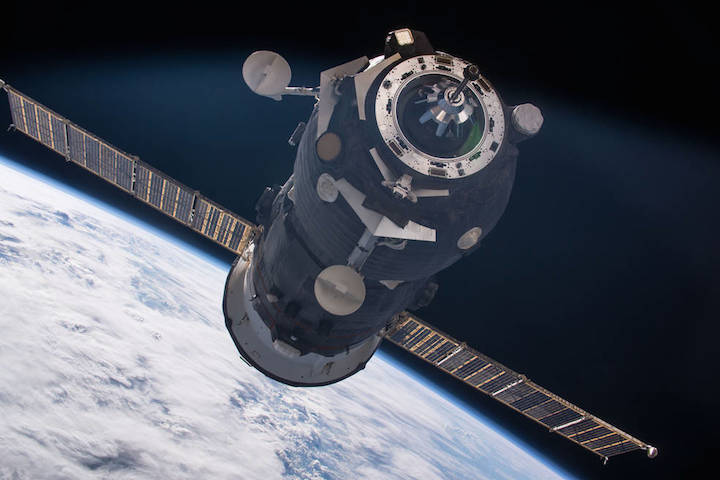
Russian launch crews stood up a Soyuz rocket Sunday on its launch mount in Kazakhstan for a scheduled liftoff Wednesday with approximately 5,500 pounds (2,500 kilograms) of supplies, experiments, fuel and several small satellites to be released by spacewalking cosmonauts at the International Space Station later this year.
The Soyuz-2.1a rocket emerged from an assembly building at the Baikonur Cosmodrome around sunrise Sunday, then trekked on a specialized train car to Launch Pad No. 31 at the historic space base, where technicians hydraulically hoisted the booster vertical. Access platforms raised into position around the Soyuz rocket for final launch preparations.
The launcher is topped with the Progress MS-06 supply ship, an unpiloted logistics freighter heading on a two-day voyage to the International Space Station.
Liftoff is set for 0920:13 GMT (5:20:13 a.m. EDT) Wednesday, or 3:20 p.m. local time at Baikonur.
The modernized Soyuz-2.1a booster, featuring redesigned third stage propellant tanks and a digital flight control computer, will deliver the Progress MS-06 spaceship to orbit less than nine minutes later. Immediately after separating from the Soyuz third stage, the resupply craft will extend its power-generating solar arrays and navigation antennas, kicking off a series of thruster burns to rendezvous with the space station.
Docking with the space station’s Zvezda service module is scheduled for 1142 GMT (7:42 a.m. EDT) Friday after a radar-guided automated final approach.

Designated Progress 67P in the space station’s sequence of crew and cargo vehicles, the upcoming Russian resupply mission will reach the research outpost nearly halfway through the visit of a SpaceX Dragon capsule that delivered nearly 6,000 pounds (2,700 kilograms) of experiments and equipment June 5.
The Progress MS-06 spaceship will carry around 2.5 metric tons (5,500 pounds) of cargo and supplies to the space station, according to a statement released by Roscosmos, the Russian space agency.
The supplies include dry cargo inside the ship’s pressurized compartment, fuel to refill the station’s propulsion system, potable water, and high-pressure gases to replenish the research lab’s breathable atmosphere, Roscosmos said.
Four small satellites are set to launch inside the Progress MS-06 spacecraft’s cabin for release by cosmonauts on a spacewalk later this year.
The Progress MS-06 supply ship will remain at the space station until December, when it will undock with a load of trash and re-enter the atmosphere for a destructive plunge over the South Pacific Ocean.
More photos of Sunday’s Soyuz rocket rollout are posted below.


















Progress MS-06 ready for launch; mission to remove Pirs module delayed

Roscosmos is in final preparations for the launch of the Progress MS-06 resupply mission to the International Space Station. Liftoff is set for 15:20:13 local time (05:20:13 EDT) from the Baikonur Cosmodrome in Kazakhstan on Wednesday, 14 June 2017 with docking following on Friday. This mission was to mark the first time a major element of the ISS will be deorbited. However, the Pirs docking compartment removal has been delayed to next year.
Progress MS-06 – launch preparations:
Given the launch campaigns of late for Roscosmos to the International Space Station, processing of the MS-06 Progress mission has been relatively uneventful and quite smooth.

In all, Progress MS-06 will be the 158th Progress mission since the program began in 1978 for resupply efforts of the Salyut 6 space station and the 69th Progress mission to the ISS, counting the two Progress flights that were not designated as resupply missions because they delivered module elements to the Station.
One of those two Progress non-resupply flights occurred in 2001, when a modified Progress delivered the Pirs docking compartment to ISS.
Including today’s launch, 69 Progress missions will have launched to ISS to date, with Progress MS-06 (or Progress 67 as it is known to NASA) being the 66th attempt of a Progress family vehicle to successfully reach the Station, following the Progress 44 launch failure in August 2011, the Progress 59 launch mishap in April 2015, and the Progress 65 launch failure in December 2016.
Following retirement of the Soyuz-U carry a rocket in February, Progress MS-06 will – as a few previous Progress missions have – utilize the Soyuz-2.1a rocket for lift off.
Following various construction milestones, system checkouts, and cargo loading, the Progress MS-06 vehicle was fueled with its propellants and compressed gases at the filling station at Baikonur on 31 May 2017.
After fueling operations were complete, technicians transferred the vehicle to the Spacecraft Assembly and Testing Facility (SC ATF), where was installed onto the assembly jig for final pre-launch processing.

In the SC ATF, engineers successfully mated Progress MS-06 to its support structure mount that will allow it to ride safely atop the third stage of the Soyuz 2.1a rocket.
Following the Designers Inspection, which clears the way for final launch processing, Progress was encapsulated into its payload fairing on 7 June.
On 9 June, engineers transported the encapsulated Progress to the Launch Vehicle Integration and Test Facility (LV ITF), where Progress was mated atop its Soyuz rocket.
The entire vehicle rolled out to launch pad 31/6 at the Baikonur Cosmodrome in Kazakhstan via rail transport on 11 June.

Under the current schedule, Progress MS-06 will launch at 09:20:13 GMT (05:20:13 EDT – 15:20:13 local time at Baikonur) on Wednesday, 14 June 2017.
After an 8 minute 45 second ascent, the Soyuz-2.1a rocket will deliver Progress MS-06 into its initial orbit to begin a two-day, 34 orbit rendezvous with the ISS.
At the time of writing, NASASpaceflight.com has not been able to confirm why Progress MS-06 is conducting a two-day rendezvous instead of the fast track, four orbit docking profile used again since earlier this year after confirmation that the new ground communications tracking center at the Vostochny Cosmodromewas completed.
Most likely, however, the two-day rendezvous is part of an overall effect of crew compliment reduction on the ISS now that the number of people onboard Station has been reduced to three for the next two months.
MS-06 and the two-day ISS rendezvous:
Once Progress MS-06 is deposited into its initial orbit, the vehicle will perform primary health checks with the Vostochny Cosmodrome in eastern Russia before passing out over the Pacific.

If all is well aboard Progress, the vehicle will perform its first orbit raising maneuver, the DV1 burn, at 08:53:03 EDT (12:53:03 GMT) on 14 June.
The DV2 burn will follow shortly thereafter at 09:31:30 EDT (13:31:30 GMT).
The two burns will cumulatively change Progress MS-06’s velocity by 62.03 m/s and raise and circularize Progress’ orbit to better match that of the International Space Station’s.
A third burn, DV3, will follow on Thursday morning at 06:55:09 EDT (10:55:09 GMT) and will finalize Progress’ orbit via a delta-V shift of 4.00 m/s.
On Friday morning, docking operations will commence when the SCAN S-bd / C2V2 / HTV PROX / Cygnus PROX / Cygnus S-bd GS / Dragon S-bd GS rendezvous systems of the USOS (United States Operating Segment) are taken to “inhibit” to prevent any interference with Progress’ automated docking system and its communication with the RS (Russian Segment) of the ISS.

Inhibiting those systems will occur at 01:20 EDT (05:20 GMT) on 16 June while Progress MS-06 is 2,700 km from Station.
Progress will then initiate its automated docking sequence three hours later at 05:19:06 EDT (09:19:06 GMT), with the Impulse 1 burn of 15.147 m/s at 05:42:44 EDT.
Impulse 1 will change Progress’ trajectory to prepare the craft for proximity ops with ISS and to begin aligning it properly for the flyaround maneuver late in the approach timeline.
Further preparations on Station will continue with the handoff from the USOS Motion Control System (MCS) to the RS MCS at 05:54 EDT.
Impulse 2, delta-V: 1.575 m/s, from Progress will follow at 06:04:13 EDT (10:04:13 GMT).

The ISS’s three person crew will then activate the Zvezda Service Module’s(SM’s) Kurs-P communication system at 06:07 EDT, followed by activation of the Kurs-NA system on Progress at 06:08 EDT.
Progress will then perform the Impulse 3 burn (delta-V: 25.01 m/s) at 06:27:11 EDT (10:27:11 GMT).
The SM’s Kurs-P system will begin tracking Progress’ range from the ISS when the two craft are separated by 45 km – which should occur at 06:37 EDT.
A final Kurs system communications check between the ISS and Progress MS-06 will follow at 06:50 EDT once Progress has closed to 15 km.
The SM’s VHF-2 transmitter will be activated at 06:55:46 EDT for TORU (Teleoperated Mode of Control) command link when Progress is 9 km from ISS, with Progress’ VHF receiver turned on at 07:05:56 EDT for TORU command link at a range of 3 km from Station.
TORU is the backup, manual docking system that Fyodor Yurchikhin, Expedition 51 Commander, will use to dock Progress MS-06 to the Station should the craft’s or Station’s automated Kurs docking system fail.

Progress will then perform the Impulse 4 maneuver, imparting a delta-V shift of 5.396 m/s at 07:07:37 EDT (11:07:37 GMT).
TORU command link test between ISS and Progress will follow seconds later at 07:07:56 EDT.
The ballistic targeting point will be established at 07:09 EDT.
Impulse 5 is scheduled for 07:11:59 EDT, altering Progress’ speed by 5.633 m/s, followed by Impulse 6 (delta-V: 1.564 m/s) at 07:14:58 EDT.
Progress will then begin its flyaround maneuver of the ISS to align itself with the aft docking port of the Zvezda SM at 07:17:43 EDT (11:17:43 GMT).
The flyaround will end at 07:26:44 EDT, at which point Progress MS-06 will perform stationkeeping (maintaining relative position with Station) as the crew and Mission Control Moscow review all data points from MS-06 and verify its alignment with SM’s aft docking port.

Under the pre-established timeline, Progress MS-06 will pulse its thrusters at 07:32:21 EDT (11:32:21 GMT) to begin the final 10 minute 9 second approach sequence.
Using its onboard computers, automated docking systems, and navigational aides, Progress MS-06 will guide itself to a planned docking at 07:42:30 EDT (11:42:30 GMT).
At the moment of docking, the RS of the Station will inhibit ISS’s attitude control, placing the Station in free drift to help equalize dispersions between Progress and the ISS created by the energy of Progress’ “contact” with the docking mechanism.
Those dispersions should dissipate in time for all the hooks on Progress to drive into the ISS at 07:56 EDT – creating a hard dock between the two craft.
The ISS will then be taken out of free drift and will reorient to its nominal attitude before the RS hands back motion control to the USOS at 08:35 EDT.
Eventual farewell to Pirs, preparing for the MLM Nauka lab:
While Progress MS-06 will dock to the International Space Station on the aft end of the Zvezda Service Module, the original plan was for the vehicle not spend all of its time at the ISS at that port.

Once Progress’ 2,398 kg (5,286 lb) of payload – which consists of crew supplies, equipment and several satellites, two of which were built by schoolchildren – had been removed and the Station’s disposal equipment packed inside, the ISS crew was to close and seal the hatches between Progress MS-06 and the Station and prepare it for undocking.
The original plan called for the vehicle to be undocked from the aft portion of this Zvezda Service Module and re-dock over the course of a couple of hours to the Progress docking port on the Pirs docking compartment.
However, this redock plan has been moved to a later flight, namely Progress MS-09 at the end of 2018.
The maneuver relates to the plan to remove the Pirs module from ISS in order to make room for the MLM (Multipurpose Laboratory Module) Nauka for Russia, which has been heavily delayed – the latest delay relating to a contamination concern.

Nauka – Russia’s primary research lab for the Station – requires the docking port Pirs is currently using.
Nauka is tentatively scheduled to launch in 2018 aboard a Proton-M rocket.
Pirs itself was delivered to ISS in 2001 via a modified Progress vehicle and is currently attached to the nadir port of Zvezda.
For its eventual removal, the now-future Progress will begin a process that no other spacecraft has yet performed – the removal for destructive deorbit of a permanent module of the International Space Station.
At the end of its mission, the future Progress mission will pulse its thrusters, while keeping its docking clamps firmly latched onto Pirs, and will pull the docking compartment away from the International Space Station.

In this manner, Pirs itself will undock from the Station, with Progress acting more like a tugboat to safely maneuver the module away from the vicinity of the ISS.
Progress will then maneuver, with Pirs still attached, toward a destructive reentry into Earth’s atmosphere that will see the first major element of the International Space Station deorbited.
The reason Roscosmos has chosen to remove Pirs from the Station has nothing to do with the compartment’s overall life expectancy, usefulness, or performance.
It was entirely related to making room for the much-delayed MLM.
Quelle: NS
---
Update: 14.06.2017
.
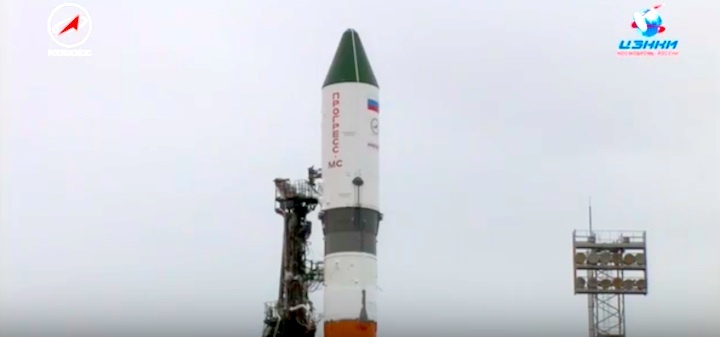
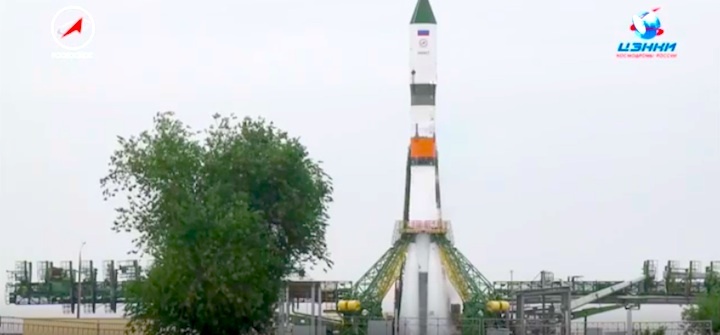
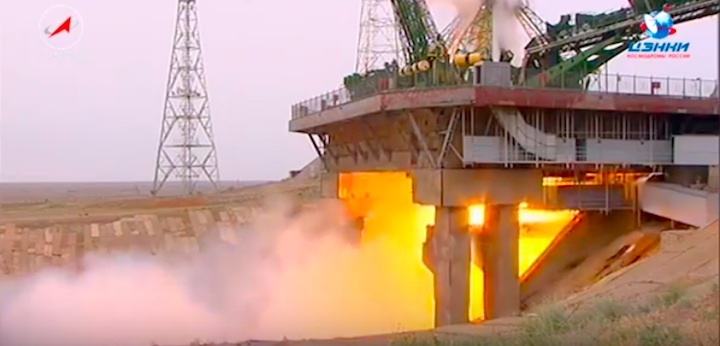
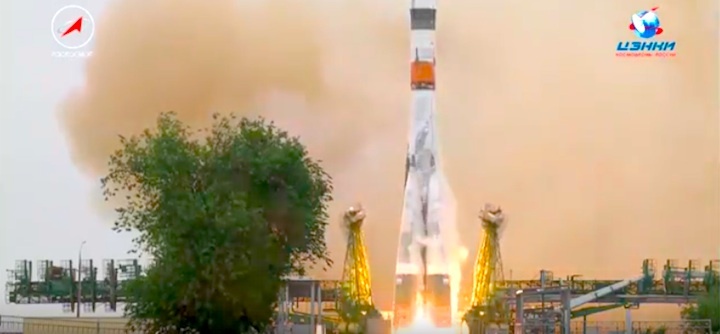
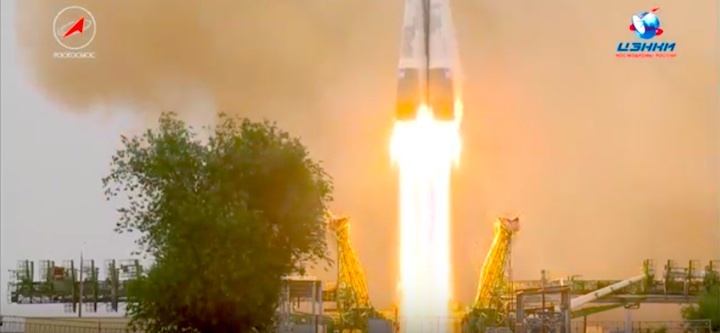
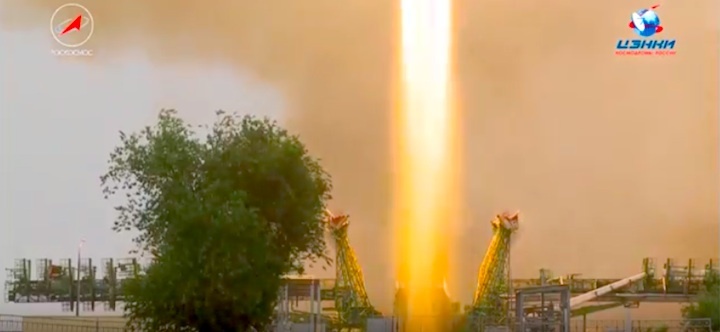
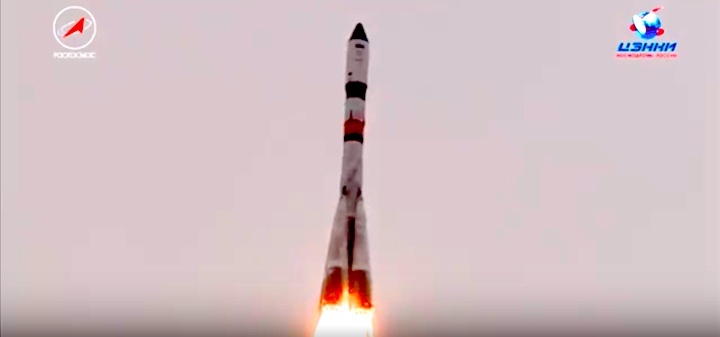
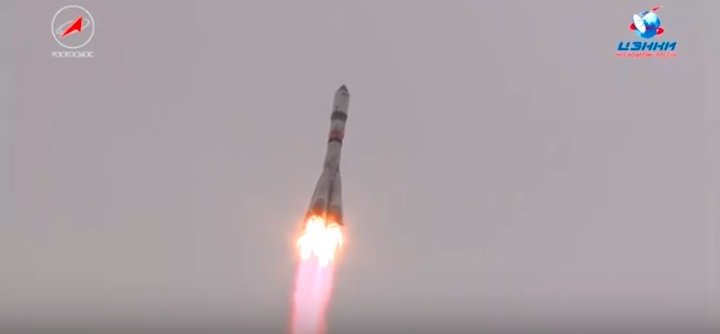
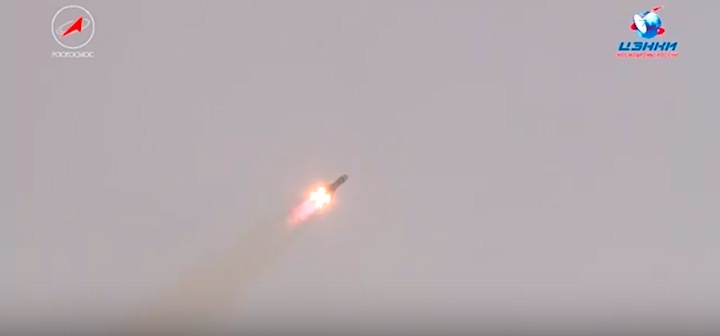
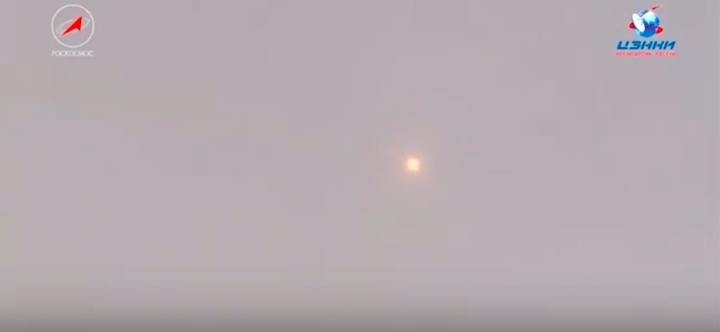
Quelle: Roscosmos

